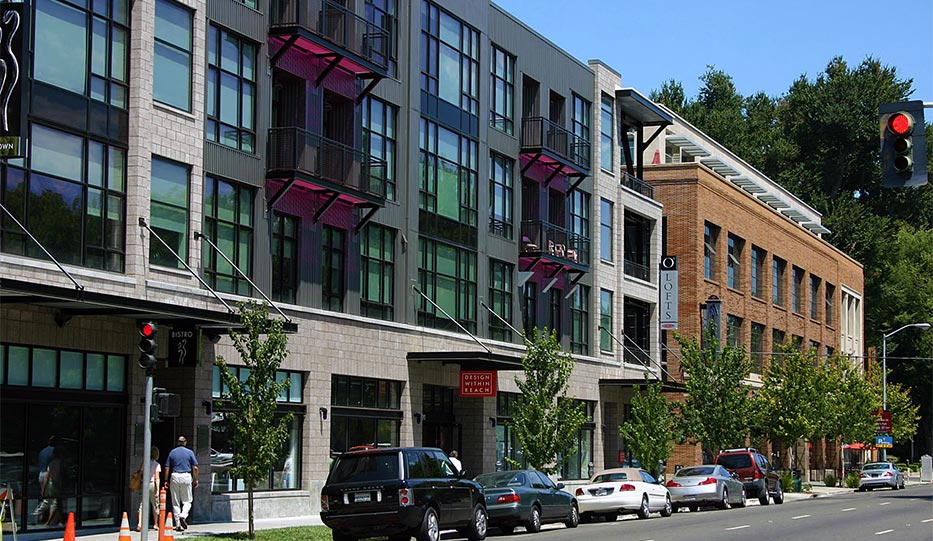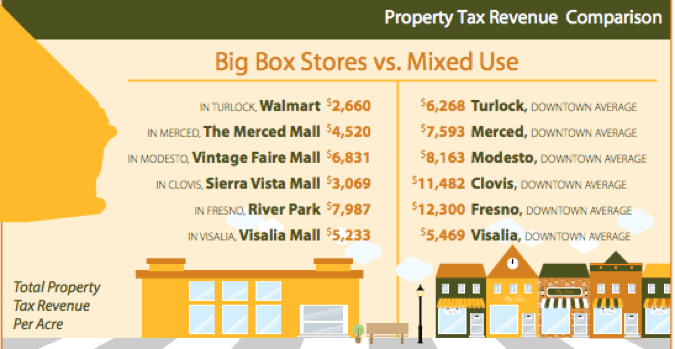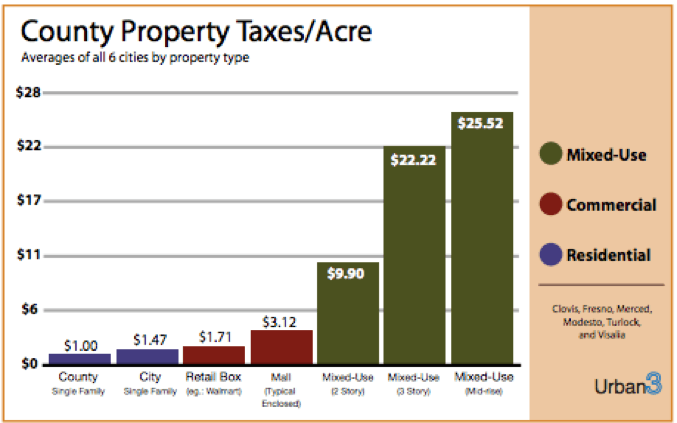As the new administration takes office in Washington, sustainability leaders across the nation have been speculating about the potential impacts on their work.
A Message to the New Administration: The Economic Argument for Livable Communities
A Message to the New Administration: The Economic Argument for Livable Communities

As the new administration takes office in Washington, sustainability leaders across the nation have been speculating about the potential impacts on their work. While only time will tell what will happen, one thing is clear: economic development and job growth will be a central focus for all decision-makers in our nation’s capital and in communities around the country.
Local leaders understand that economic development and environmental leadership must go hand-in-hand. Experts and practitioners have documented that pro-economic and pro-environmental strategies can go hand in hand. Picking one over the other is a false choice – we can have both if we look for common ground.
Clean Energy Investments Pay Off Big
One of the biggest sources of carbon pollution in most U.S. cities comes from buildings. Generating the power to heat, cool and illuminate buildings causes carbon pollution and results in increasingly expensive utility bills for local governments, businesses and residents alike.
Even if we don’t share the same view on climate science; we can certainly agree it doesn’t make financial sense to spend more money than we need to powering our buildings.
Improving the efficiency of our energy and resource use can reduce costs for the city and its residents. Each additional $1 invested on energy efficiency avoids more than $2 on energy supply spending.
Public-private partnerships are helping catalyze investment in renewable energy and energy efficiency. For example, the HERO Property Assessed Clean Energy (PACE) program is available to 90% of California households, and has already helped invest $2 billion in completed projects, and create more than 16,000 jobs. Over the lifetime of these improvements, we will avoid 3.3 million tons of CO2 emissions, save 6.8 billion gallons of water, and cut $3.3 billion from utility bills.
Beyond the significant environmental benefits behind investing in clean energy the economic argument by itself provides sufficient rationale to implement these strategies.
Combating Climate Change Saves Money
Acting on climate-change impacts is not only an environmental imperative, it’s also a smart risk mitigation and financial protection necessity, according to the Risky Business Report from the Paulsen Institute. Addressing climate consequences would help local governments avoid tens of billions of dollars in damage from floods and other severe-weather events, and save farmers up to $11 billion a year in damage to crops from a combination of drought, flooding and destructive storms. Tens of millions of acres of forests would be preserved because of fewer wildfires. That’s good for our economy and the environment.
Corporations recognize that a healthy environment and a strong economy are connected. More than 360 American companies, including Mars, Nike, Levi Strauss and Starbucks, and major investors have urged President Trump and the Republican-led Congress not to abandon the Paris climate pact. A failure by the United States to build a clean economy, they agree, endangers American prosperity.
These companies also indicated that they would push ahead with their own targets to reduce their carbon footprints, regardless of steps taken by the new administration.
Economic Benefits of State Climate and Energy Programs in the San Joaquin Valley
A recent study from UC Berkeley researchers commissioned by Next 10 illustrates the benefits that California’s ambitious climate policies (including cap and trade, the renewable portfolio standard and energy-efficiency programs) have had in the San Joaquin Valley. Amid concerns about both economic and employment impacts, they found the overall economic benefit from these strategies totals $13.4 billion.
Cap and Trade: State investments in creating more affordable housing, modernizing irrigation, incentives for electric cars, and the high-speed rail project have generated significant economic benefits in the San Joaquin Valley.
- $119 million to the San Joaquin Valley in direct economic benefit from cap-and trade.
- $81 million in additional indirect and induced economic benefits.
- $1.5 billion in direct and indirect economic benefits, if allocated funding is included.
- 700 net jobs created directly, and more than 1,600 supporting service and industry jobs were created indirectly.
- $4.7 million boost in state and local tax revenues (2013-15).
Renewable Energy: The San Joaquin Valley is home to 24% of California’s solar generation and 54% of its wind generation, which benefits the environment and provides significant employment opportunities in the region.
- $11.6 billion in total economic activity in the Valley.
- 31,000 direct jobs for people building and operating renewable-energy facilities.
- 57,000 additional indirect and induced jobs for suppliers and supporting businesses.
Energy efficiency: Programs in the San Joaquin Valley have created 17,400 jobs and reduced utility bills for municipalities, businesses and residents.
- $248 million in net economic benefits since 2010
- 6,700 direct jobs from 2006 to 2015, two-thirds of them in the construction industry
- 10,700 indirect and induced Valley jobs.
Smart growth Is a Smart Investment
Smart-growth development saves an average of 38% on upfront costs for new construction of roads, sewers, water lines and other infrastructure, according to Smart Growth America’s “Building Better Budgets” report that surveyed cities across the nation. These development patterns require less infrastructure, which means upfront capital costs, long-term operations and maintenance expenditures, and, presumably, costs for eventual replacement are all lower.
Smart-growth development generates 10 times more tax revenue per acre than conventional suburban development and saves an average of 10% on ongoing delivery of services by reducing the distances that police, ambulance and fire service vehicles must drive.
These calculations have been proven on-the-ground in communities across the state. For example, the Local Government Commission supported a review of city and county property tax revenues in six San Joaquin Valley cities and found that focusing growth in downtown areas is a better bet for cash-strapped local governments than traditional urban sprawl for two reasons:
- The average downtown property provides significantly more property-tax revenue per acre to city and county governments than big-box style retail developments.
- In all six cities studied, centrally located properties designed to serve a mix of retail, residential and office uses result in significantly higher revenue yields per acre than single-purpose properties.


For every tax dollar that the county receives from a suburban-style single-family home, it gets more than 25 times that amount from a mid-rise, mixed-use building in the city center.
Affordable Housing Is Crucial for a Strong Economy
Lastly, solving California’s housing shortage will be critical to strengthening our state’s economy. A 2016 report by the McKinsey Global Institute titled “A tool kit to close California’s housing gap: 3.5 million homes by 2025” calculates that the housing shortage costs the California economy between $143 billion and $233 billion per year. That amount comes from three primary sources:
- Households that spend a large share of their income on rent or mortgage payments have less money to spend on other things – products and services provided by businesses. They estimate that California’s high housing costs crowd out $53 billion to $63 billion of consumption per year. For low-income households, even necessities such as food and clothing can be crowded out by housing.
- California’s housing shortage is also a lost opportunity for the construction industry. Typically, every $1 of output from the construction industry creates $2.15 in total economic output. Lost construction activity costs the state economy an estimated $85 billion to $165 billion per year.
The housing shortage also contributes to homelessness. California has well over 100,000 homeless people – about one-quarter of the homeless population in the United States. In addition to the physical and emotional suffering that homeless people (many of them children, families and military veterans) endure, the state spends $5 billion annually to provide shelter, emergency-room visits, policing, mental health interventions and other services to this vulnerable population.
California’s leadership is more critical than ever. California is the world’s sixth-largest economy, and one of every eight Americans lives in California. We have a tremendous responsibility to the rest of the nation and the world to maintain our position as economic, environmental and social-equity leaders.
We must use our economic strength, political courage and moral resolve to push back against federal measures that undermine our state and community values. We must also push forward the case that strong economies and strong communities are rooted in the same vision – they are two sides of the same coin that make, and keep, America great.
Local Government Commission Newsletters
Livable Places Update
CURRENTS Newsletter
CivicSpark™ Newsletter
LGC Newsletters
Keep up to date with LGC’s newsletters!
Livable Places Update – April
April’s article: Microtransit: Right-Sizing Transportation to Improve Community Mobility
Currents: Spring 2019
Currents provides readers with current information on energy issues affecting local governments in California.
CivicSpark Newsletter – March
This monthly CivicSpark newsletter features updates on CivicSpark projects and highlights.



